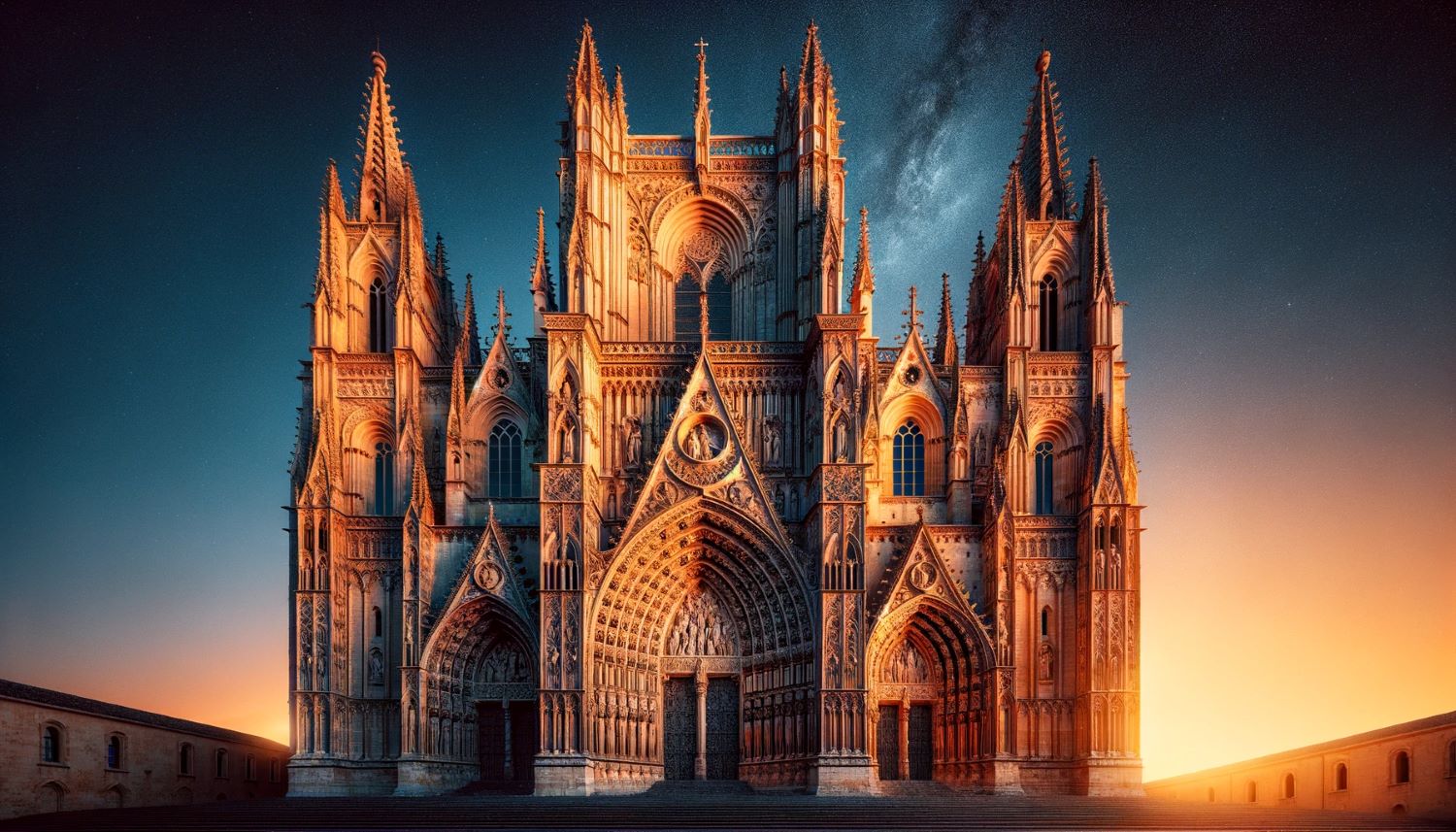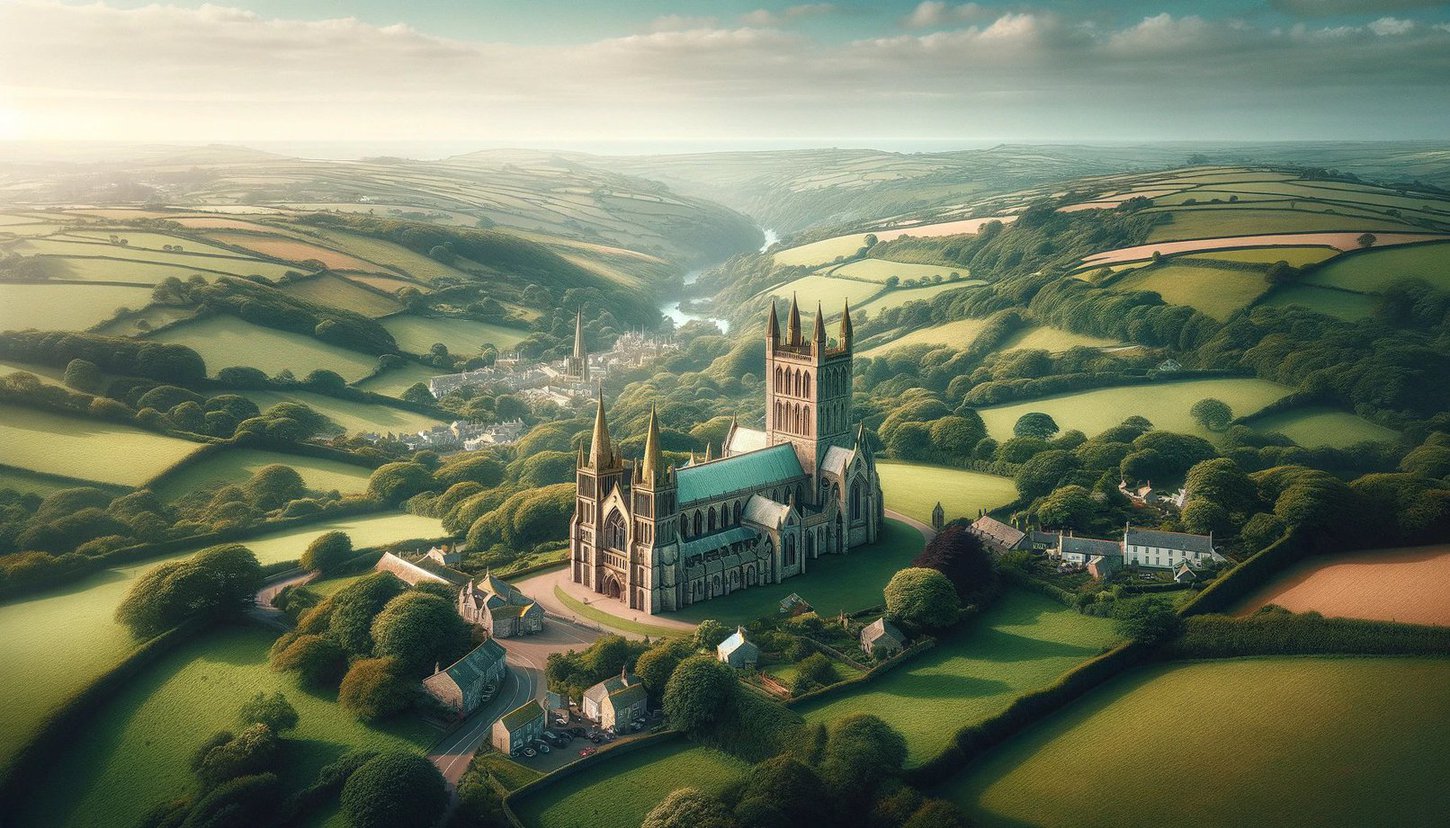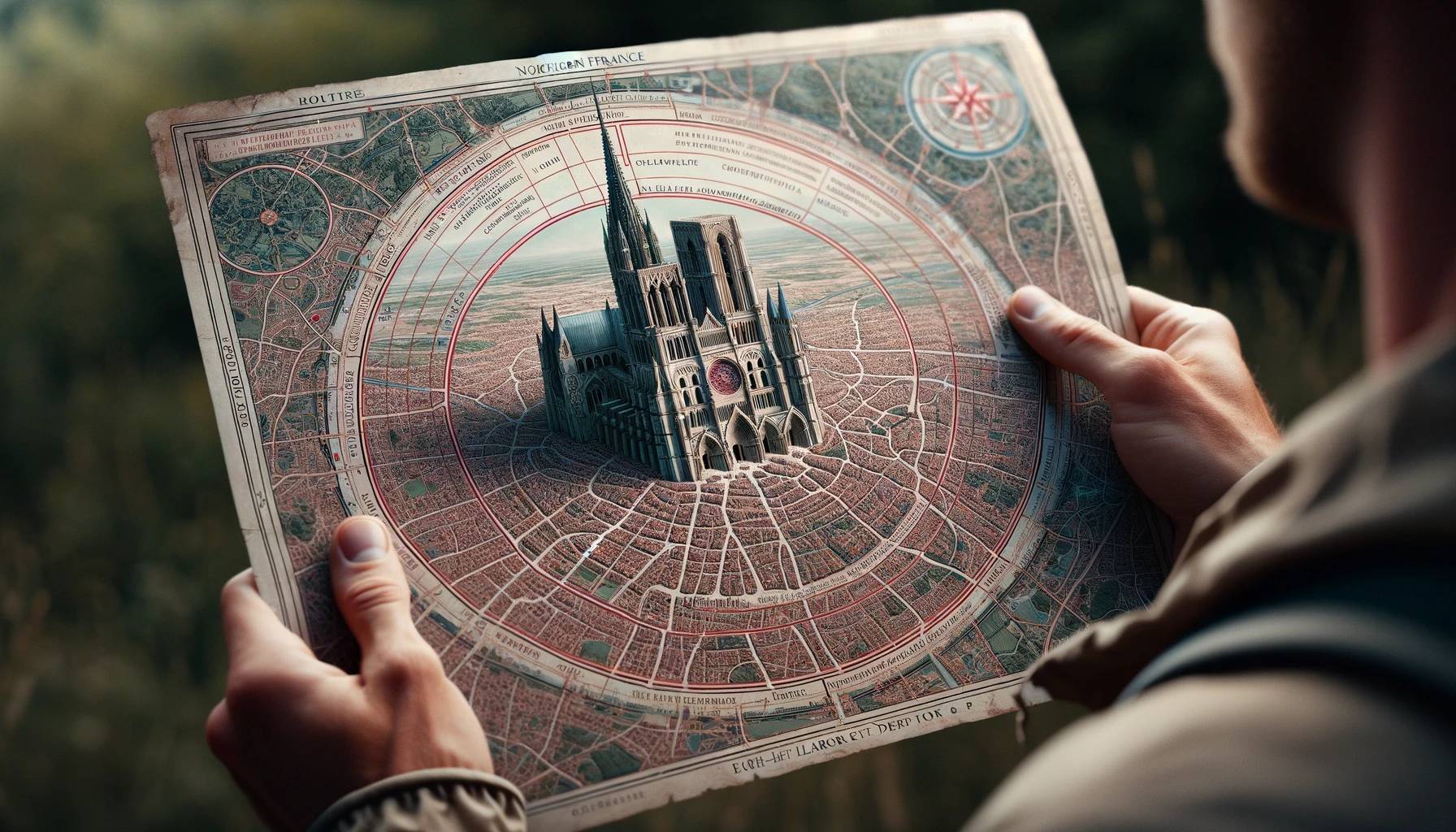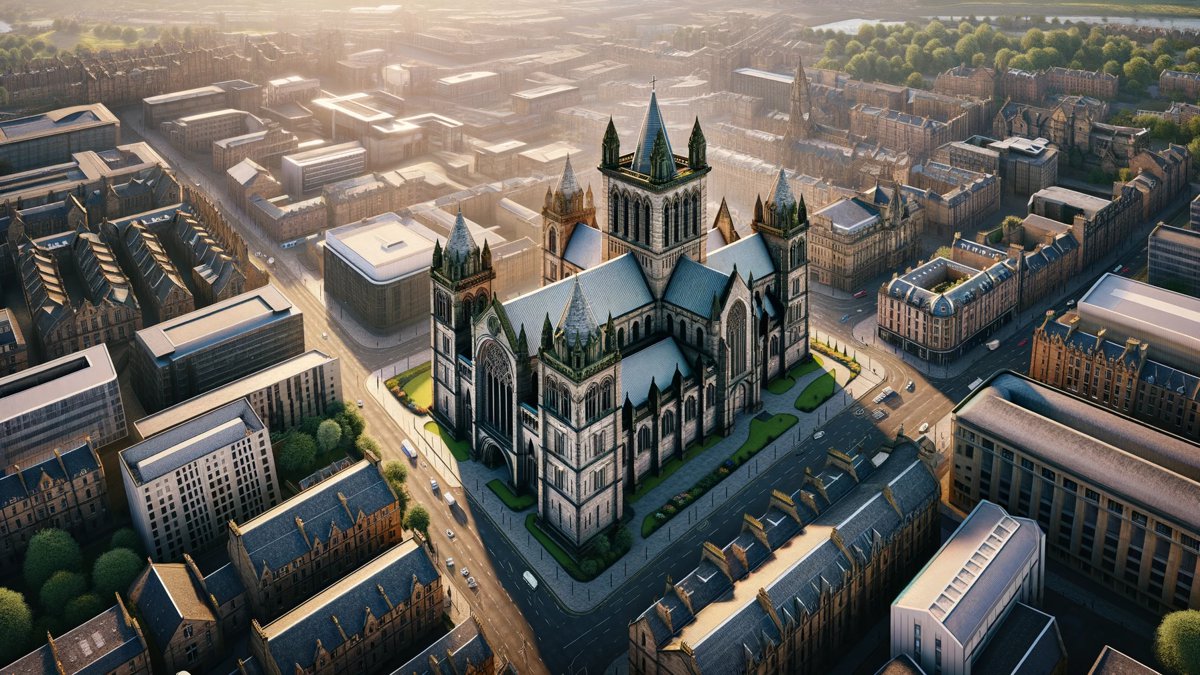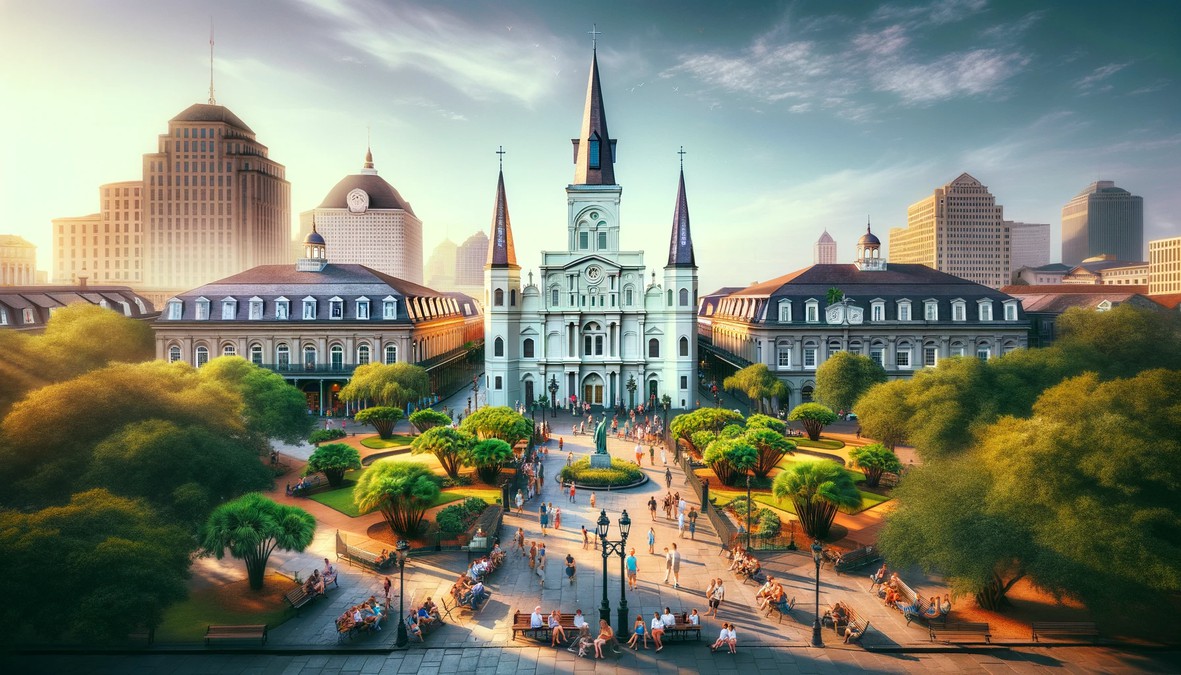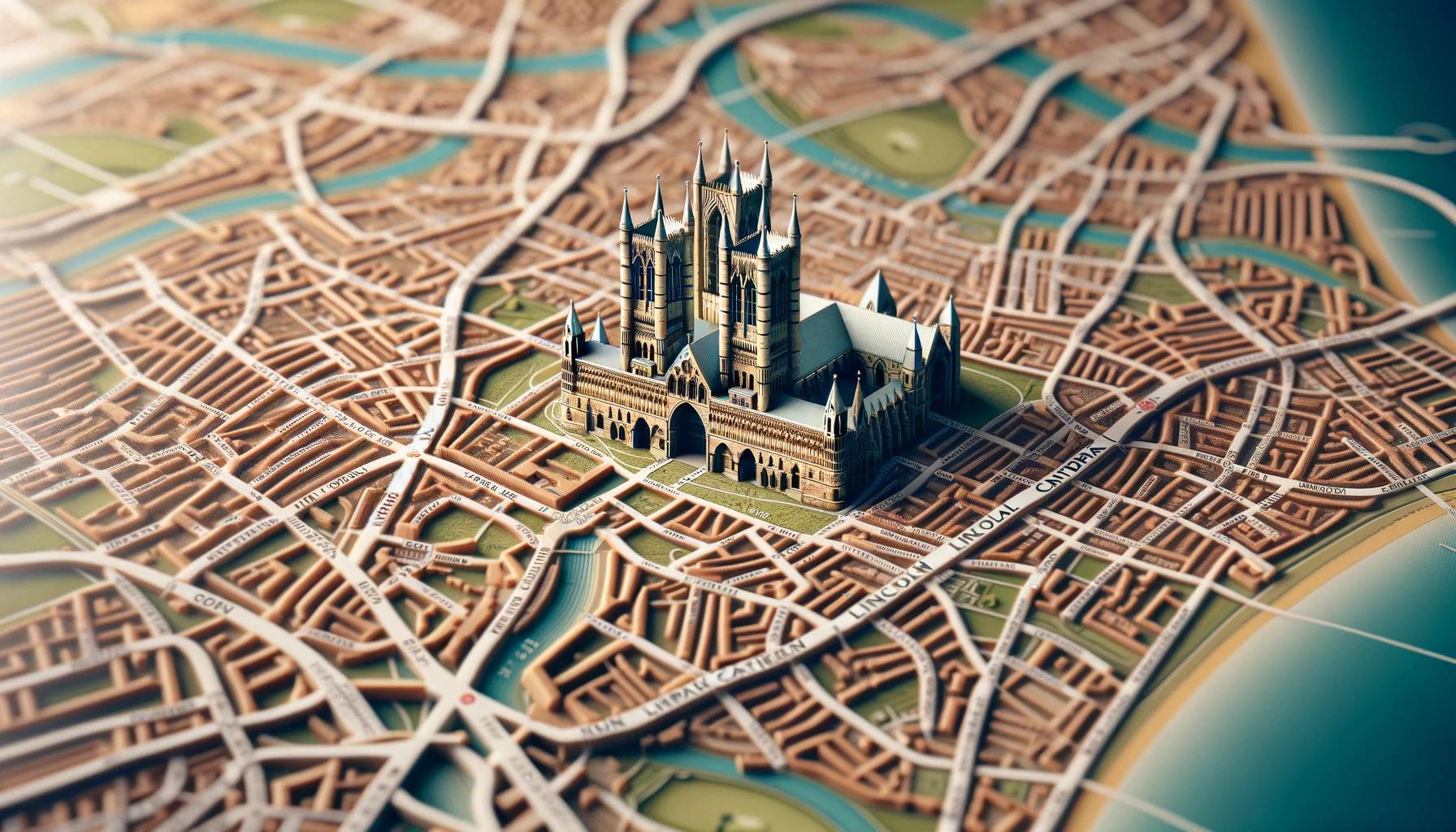Home>Arts and Culture>Where Is Santiago De Compostela Cathedral
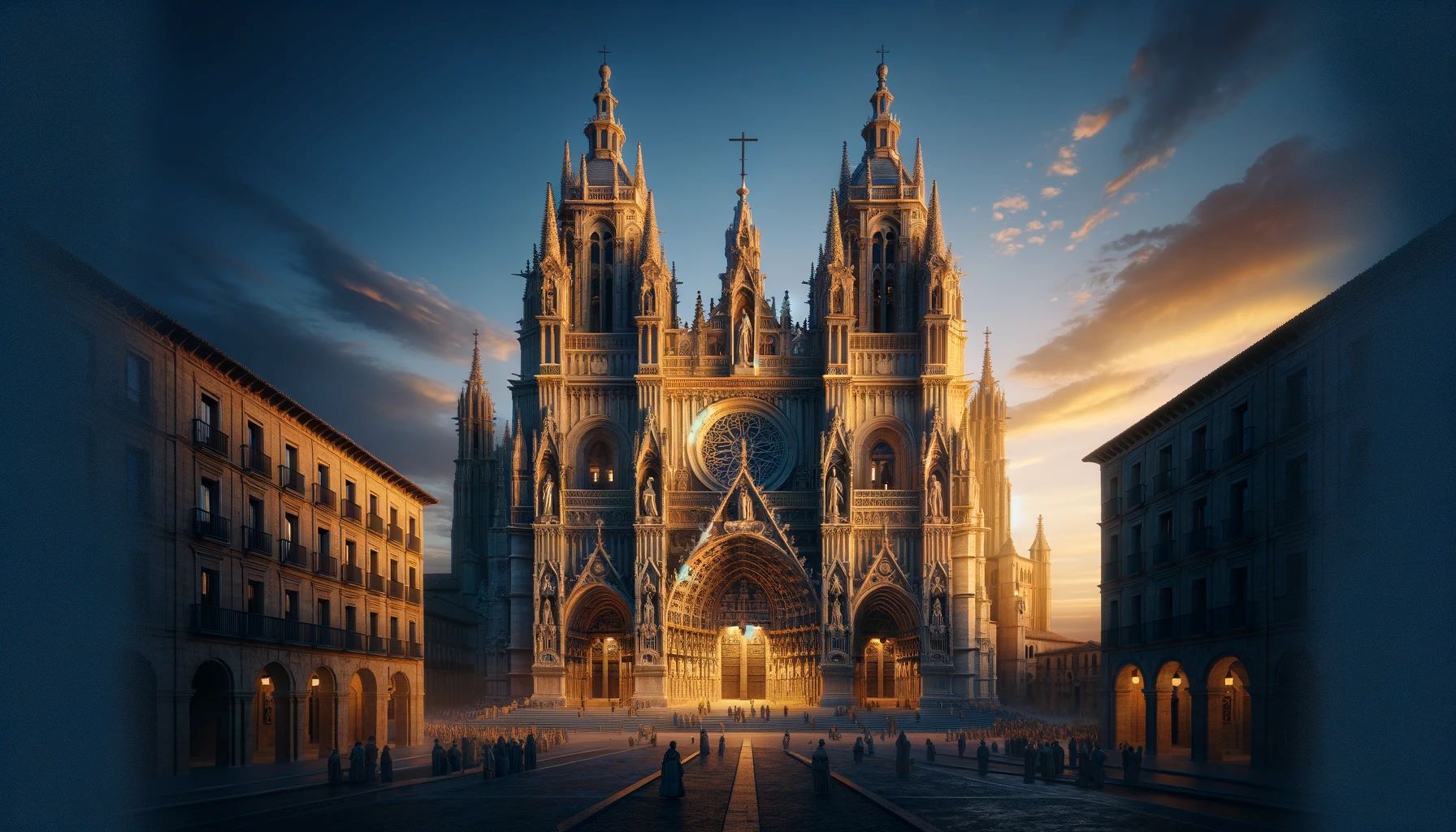

Arts and Culture
Where Is Santiago De Compostela Cathedral
Published: February 17, 2024
Ericka Andersen, an editor at Christian.net, expertly merges digital strategy with content creation, focusing on faith and societal issues. Her communication skills enhance the platform's engaging narratives, fostering meaningful dialogue on belief's impact on society.
Discover the rich arts and culture of Santiago de Compostela Cathedral. Explore its history, architecture, and artistic treasures on your next visit.
(Many of the links in this article redirect to a specific reviewed product. Your purchase of these products through affiliate links helps to generate commission for Christian.net, at no extra cost. Learn more)
Table of Contents
Introduction
Santiago de Compostela Cathedral, a magnificent edifice nestled in the heart of the historic city of Santiago de Compostela in Galicia, Spain, stands as a testament to centuries of religious devotion, architectural prowess, and artistic splendor. This revered pilgrimage site, dedicated to the apostle St. James, has drawn countless pilgrims and visitors from around the world, each seeking spiritual enlightenment, cultural enrichment, and a profound connection to history.
The cathedral's significance transcends its religious roots, encompassing a rich tapestry of art, history, and tradition. Its allure extends beyond the realm of faith, beckoning travelers, historians, and art enthusiasts to marvel at its grandeur and immerse themselves in its storied past. As we delve into the history, architecture, art, and the enduring allure of the pilgrimage to Santiago de Compostela Cathedral, we will uncover the captivating facets that have elevated this sacred site to global acclaim.
Read more: Where Is Cathedral Of Santiago De Compostela
History of Santiago de Compostela Cathedral
The history of Santiago de Compostela Cathedral is a captivating saga that intertwines religious fervor, architectural marvel, and historical significance. The origins of the cathedral can be traced back to the 9th century when the tomb of St. James the Apostle was purportedly discovered in the region. This discovery catalyzed the emergence of Santiago de Compostela as a major pilgrimage destination, drawing throngs of devout travelers seeking spiritual solace and divine blessings.
The initial structure, a modest church, was erected to enshrine the revered relics of St. James. However, as the pilgrimage route, known as the Camino de Santiago, gained prominence, the need for a grander edifice became apparent. Consequently, the construction of the present-day cathedral commenced in the 11th century under the patronage of King Alfonso VI of León and Castile. The cathedral's evolution unfolded over the centuries, incorporating Romanesque, Gothic, Baroque, and Renaissance elements, each bearing the imprint of the era's architectural sensibilities.
Throughout its tumultuous history, the cathedral endured periods of expansion, renovation, and restoration, often mirroring the socio-political upheavals that swept through Spain. The cathedral's resilience in the face of adversity is a testament to the unwavering devotion of pilgrims and the enduring legacy of St. James.
The cathedral's significance transcends its religious role, assuming a pivotal position in the cultural and artistic heritage of Spain. Its status as a UNESCO World Heritage Site underscores its universal value as a symbol of faith, artistry, and human endeavor. The history of Santiago de Compostela Cathedral is a chronicle of faith, pilgrimage, and the enduring pursuit of spiritual enlightenment, etched into the annals of time with reverence and awe.
As the sun sets over the hallowed spires of Santiago de Compostela Cathedral, it casts a timeless glow upon the pilgrims who have traversed continents to stand in its presence, perpetuating a legacy that transcends generations.
Architecture of Santiago de Compostela Cathedral
The Santiago de Compostela Cathedral stands as a resplendent testament to the evolution of architectural styles across centuries. Its facade, a harmonious blend of Romanesque, Baroque, and Gothic elements, exudes a captivating grandeur that captivates visitors from the moment they behold its majestic presence. The cathedral's exterior is adorned with intricate sculptures, ornate reliefs, and imposing towers that soar into the Galician sky, evoking a sense of awe and reverence.
As one crosses the threshold into the cathedral's sacred interior, a symphony of architectural marvels unfolds. The nave, with its soaring vaults and majestic columns, beckons visitors to gaze heavenward in contemplation. The interplay of light and shadow, cast by the stained glass windows that adorn the cathedral, imbues the space with an ethereal ambiance, inviting quiet introspection and spiritual reverence.
The Portico of Glory, a masterpiece of Romanesque sculpture, stands as a crowning achievement of the cathedral's architectural splendor. Carved by the skilled hands of Master Mateo in the 12th century, this exalted portico depicts scenes from the Last Judgment, intricately rendered in stone. The intricate detailing and emotive expressions of the sculptures transport visitors to a realm where art and faith converge in a mesmerizing display of creativity and devotion.
The cathedral's cloisters, a tranquil oasis nestled within its hallowed precincts, offer a serene respite for contemplation. The delicate tracery of the cloister's arches, adorned with delicate carvings and motifs, serves as a testament to the artisans who labored to infuse this sacred space with timeless beauty.
The Baroque facade, with its ornate embellishments and exuberant flourishes, reflects the artistic sensibilities of the era, adding a layer of opulence to the cathedral's exterior. The Obradoiro facade, a pinnacle of Baroque architecture, commands attention with its intricate detailing and imposing presence, inviting visitors to marvel at the fusion of artistic expression and religious devotion.
As the sun sets over the hallowed spires of Santiago de Compostela Cathedral, it casts a timeless glow upon the pilgrims who have traversed continents to stand in its presence, perpetuating a legacy that transcends generations. The architectural splendor of the cathedral stands as a testament to the enduring legacy of human creativity, faith, and the timeless pursuit of spiritual enlightenment.
Art and Relics in Santiago de Compostela Cathedral
The Santiago de Compostela Cathedral is a treasure trove of art and relics, each imbued with profound historical, cultural, and spiritual significance. As pilgrims and visitors traverse the hallowed halls of the cathedral, they are enveloped in a tapestry of artistic splendor and revered relics, each bearing witness to the enduring legacy of St. James and the unwavering devotion of countless faithful.
The cathedral's interior serves as a sanctuary for an impressive array of religious art, including altarpieces, sculptures, and paintings that span centuries of artistic expression. The main altarpiece, a masterpiece of Spanish Baroque art crafted by renowned sculptor José Gambino, commands attention with its intricate detailing and emotive portrayal of sacred scenes. The interplay of light and shadow, cast upon the altarpiece, infuses the space with an ethereal ambiance, inviting contemplation and reverence.
The Pórtico de la Gloria, an exalted Romanesque masterpiece adorning the western facade, stands as a testament to the artistic prowess of Master Mateo and his team of skilled artisans. The intricately carved sculptures, depicting scenes from the Bible and the celestial realm, captivate visitors with their emotive expressions and exquisite craftsmanship. As sunlight filters through the cathedral's stained glass windows, the sculptures come to life, casting a mesmerizing tableau of light and shadow that transcends time and space.
The Botafumeiro, a colossal thurible suspended from the cathedral's transept, epitomizes the fusion of artistry and ritual. This awe-inspiring censer, weighing nearly 80 kilograms, is set into motion during special religious ceremonies, soaring through the air with a graceful arc as it dispenses fragrant clouds of incense. The Botafumeiro's ritualistic performance is a testament to the cathedral's enduring traditions and the seamless integration of art, faith, and ceremony.
In addition to its artistic treasures, the Santiago de Compostela Cathedral safeguards a revered collection of relics, including the relics of St. James the Apostle. Pilgrims from far and wide converge upon the cathedral to pay homage to these sacred artifacts, seeking solace, healing, and spiritual communion. The relics serve as tangible links to the apostolic age, fostering a profound sense of connection to the early roots of Christianity and the enduring legacy of St. James.
As the sun sets over the hallowed spires of Santiago de Compostela Cathedral, it casts a timeless glow upon the pilgrims who have traversed continents to stand in its presence, perpetuating a legacy that transcends generations. The art and relics enshrined within the cathedral's sacred precincts stand as a testament to the enduring power of creativity, faith, and the timeless pursuit of spiritual enlightenment.
Pilgrimage to Santiago de Compostela Cathedral
The pilgrimage to Santiago de Compostela Cathedral, known as the Camino de Santiago or the Way of St. James, is a transformative journey that has beckoned pilgrims for over a millennium. Embarking on this sacred odyssey, pilgrims traverse ancient paths, traverse diverse landscapes, and forge profound connections with fellow travelers, all in pursuit of spiritual enlightenment and a profound encounter with the divine.
The Camino de Santiago encompasses a network of pilgrimage routes that converge upon the hallowed grounds of Santiago de Compostela, drawing pilgrims from diverse cultural, religious, and geographical backgrounds. The most renowned route, the Camino Francés, spans over 500 miles, leading pilgrims through the picturesque landscapes of northern Spain, from the Pyrenees to the verdant hills of Galicia. As pilgrims tread the time-worn paths, they are enveloped in a tapestry of natural beauty, historical landmarks, and the enduring spirit of camaraderie that unites all who embark on this sacred quest.
The pilgrimage to Santiago de Compostela Cathedral transcends the physical act of walking; it represents a profound inner journey marked by introspection, self-discovery, and spiritual renewal. Pilgrims from across the globe undertake this transformative odyssey for a myriad of reasons – seeking solace in times of adversity, embarking on a quest for self-discovery, or simply embracing the opportunity to immerse themselves in a timeless tradition that transcends generations.
Along the pilgrimage routes, pilgrims encounter a rich tapestry of cultural traditions, local cuisine, and the warm hospitality of the communities that line the Camino. Albergues, or pilgrim hostels, provide a welcoming refuge for weary travelers, fostering a sense of kinship and shared purpose among pilgrims from diverse walks of life. The communal meals, shared stories, and moments of quiet reflection create a sense of unity that transcends language barriers and cultural differences, reinforcing the profound bond that unites all who partake in this sacred pilgrimage.
Upon reaching the Santiago de Compostela Cathedral, pilgrims are greeted by the awe-inspiring sight of the cathedral's grand facade, a testament to centuries of devotion and human endeavor. The culmination of the pilgrimage is marked by the time-honored tradition of embracing the statue of St. James within the cathedral, a poignant moment of spiritual fulfillment and gratitude for the transformative journey undertaken.
As the sun sets over the hallowed spires of Santiago de Compostela Cathedral, it casts a timeless glow upon the pilgrims who have traversed continents to stand in its presence, perpetuating a legacy that transcends generations. The pilgrimage to Santiago de Compostela Cathedral stands as a testament to the enduring power of faith, resilience, and the timeless pursuit of spiritual enlightenment.
Conclusion
In conclusion, Santiago de Compostela Cathedral stands as a timeless testament to the enduring legacy of faith, artistry, and the profound human yearning for spiritual enlightenment. From its humble origins as a modest shrine to the apostle St. James to its evolution into a grand architectural marvel, the cathedral has woven a rich tapestry of history, art, and pilgrimage that continues to captivate the hearts and minds of visitors from around the world.
The cathedral's history, spanning over a millennium, reflects the ebb and flow of human endeavor, resilience, and unwavering devotion. Each stone of its magnificent facade and every delicate carving within its sacred precincts bear witness to the passage of time and the enduring legacy of St. James, whose relics have drawn pilgrims to this hallowed site for centuries.
The architectural splendor of Santiago de Compostela Cathedral, with its harmonious blend of Romanesque, Gothic, and Baroque elements, serves as a testament to the evolution of artistic expression across the ages. The interplay of light and shadow within its sacred interior, the emotive sculptures of the Portico of Glory, and the opulent detailing of its Baroque facade converge to create an immersive experience that transcends mere aesthetics, inviting visitors to embark on a journey through time and artistry.
The cathedral's collection of art and relics, from the exalted Pórtico de la Gloria to the revered relics of St. James, serves as a poignant reminder of the enduring power of creativity, devotion, and the human quest for transcendence. Each masterpiece and sacred artifact within the cathedral's confines bears the indelible imprint of history, inviting pilgrims and art enthusiasts to partake in a profound communion with the divine and the artistic legacy of generations past.
The pilgrimage to Santiago de Compostela Cathedral, encompassing the transformative odyssey of the Camino de Santiago, represents a timeless tradition that unites pilgrims from diverse corners of the globe. The pilgrimage is not merely a physical journey; it is a profound inner quest marked by introspection, camaraderie, and the enduring pursuit of spiritual fulfillment. As pilgrims traverse ancient paths, forge connections with fellow travelers, and ultimately stand in the presence of the cathedral, they become part of a timeless narrative that transcends cultural boundaries and resonates with the universal human experience.
In essence, Santiago de Compostela Cathedral embodies the convergence of faith, art, and pilgrimage, perpetuating a legacy that transcends generations and beckons all who seek spiritual enlightenment and cultural enrichment. As the sun sets over the hallowed spires of the cathedral, it casts a timeless glow upon the pilgrims and visitors who have been touched by its enduring allure, perpetuating a legacy that will continue to inspire and captivate for centuries to come.
